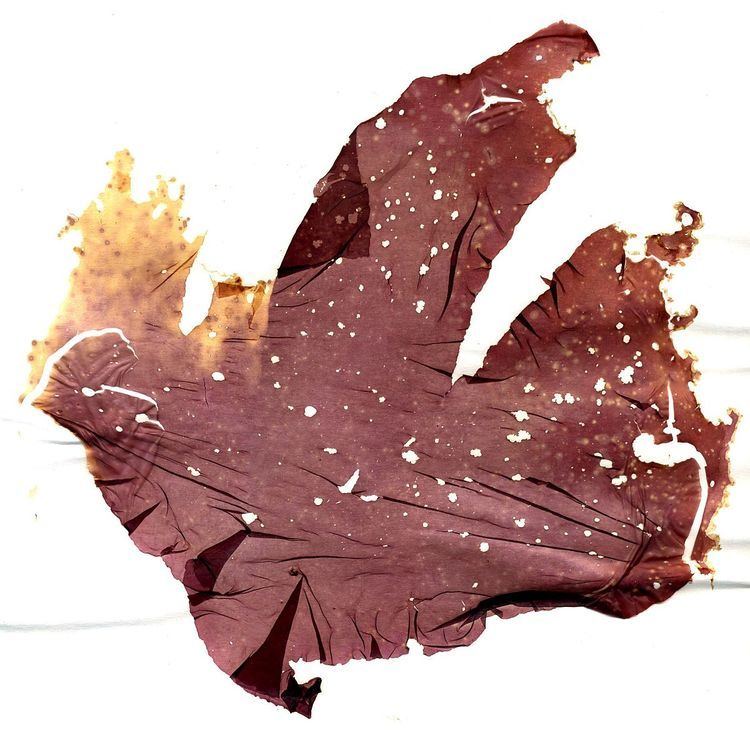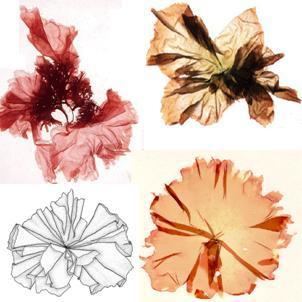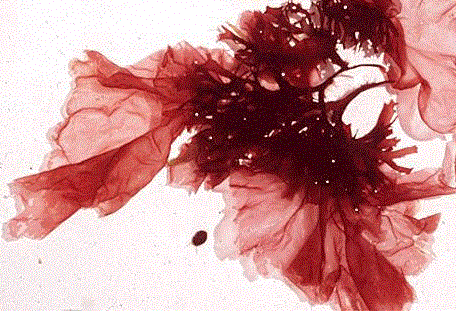Domain Eukaryota Order Bangiales Scientific name Porphyra Rank Genus | Family Bangiaceae Higher classification Bangiaceae | |
 | ||
Similar | ||
Nori porphyra underwater at silverstrand galway bay
Porphyra is a coldwater seaweed that grows in cold, shallow seawater. More specifically, it belongs to red algae phylum of laver species, comprising approximately 70 species. It grows in the intertidal zone, typically between the upper intertidal zone and the splash zone in cold waters of temperate oceans. In East Asia, it is used to produce the sea vegetable products nori (in Japan) and gim (in Korea). There are considered to be 60 to 70 species of Porphyra worldwide and seven in the British Isles.
Contents

Life cycle
Porphyra displays a heteromorphic alternation of generations. The thallus we see is the haploid generation; it can reproduce asexually by forming spores which grow to replicate the original thallus. It can also reproduce sexually. Both male and female gametes are formed on the one thallus. The female gametes while still on the thallus are fertilized by the released male gametes, which are non-motile. The fertilized, now diploid, carposporangia after mitosis produce spores (carpospores) which settle, then bore into shells, germinate and form a filamentous stage. This stage was originally thought to be a different species of alga, and was referred to as Conchocelis rosea. That Conchocelis was the diploid stage of Porphyra was discovered by the British phycologist Kathleen Mary Drew-Baker in 1949 for the European species Porphyra umbilicalis. It was later shown for species from other regions as well.
Food

Most human cultures with access to Porphyra use it as a food or somehow in the diet, making it perhaps the most domesticated of the marine algae, known as laver, nori (Japanese), amanori (Japanese), zakai, gim (Korean), zicai (Chinese), karengo, sloke or slukos. The marine red alga Porphyra has been cultivated extensively in many Asian countries as an edible seaweed used to wrap the rice and fish that compose the Japanese food sushi, and the Korean food gimbap. In Japan, the annual production of Porphyra species is valued at 100 billion yen (US$1 billion).
Species

Many species previously included in the genus Porphyra has transferred to Pyropia, for example Pyropia tenera, Pyropia yezoensis and the species from New Zealand Pyropia rakiura and Pyropia virididentata.


